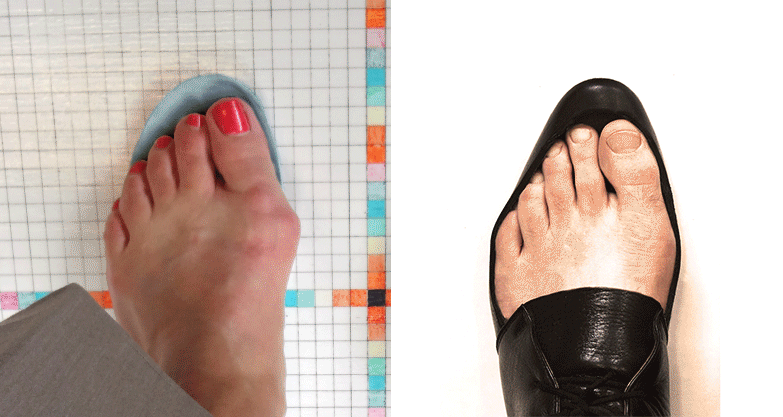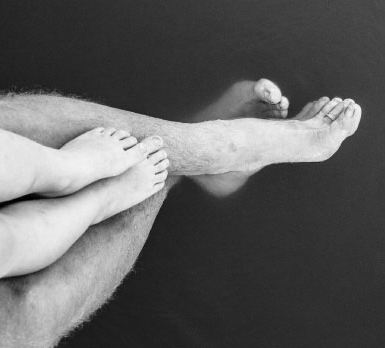
In spite of the fact that the medical community has made advances in the care of many common medical conditions, the treatment of bunion deformity is still locked in the dark ages.
Today’s podiatric students and residents are being taught that bunions are hereditary, represent a bone structure problem, and require surgery for definitive treatment. They are being taught that the progression of bunions can be slowed by supporting the arch (subtalar joint) with orthotic devices. They are encouraged to recommend wide width footwear to their future patients, which does not fix the problem, as you will see below.
This perspective represents the current standard of care in podiatric education and practice, but is it based in evidence?
The short answer is no.
There are several clues as well as self-evident medical facts, that point to the flaws in the presently accepted educational approach and treatment of bunion deformity.
Humans are not born with bunions. In all but the exceedingly rare case, human babies are born with toes that spread wider than the balls of their feet. We even seem to respect this anatomical reality by manufacturing footwear for babies that are the same shape as their natural feet. However, around the age of 3, we begin changing the shape of the feet of infants by fitting them in footwear that no longer respects natural human foot anatomy, and we start squeezing their toes together. We begin fitting them in shoes that are widest at the balls of their feet, as opposed to where natural feet are widest: at the ends of the toes. This is where bunion deformity begins.

Throughout the lives of most humans in shoe wearing societies, they will continue to purchase footwear that is widest at the balls of the feet and gets narrower in the toebox. Consequently, their feet will become shaped like their shoes. This happens because most footwear available to them is manufactured this way, and the current system for measuring feet, the Brannock device, gives feet their width measurement at the ball of the foot. Nearly everyone’s feet have become misshaped by their shoes early in life, so we fail to recognize that there is nothing natural about the shape of our feet. We have created a new normal, not without significant negative consequences, which eventually show up as pain and disability.

A group of researchers from Harvard recently published an article on the “Framingham Foot Study” in Arthritis Care & Research where they concluded that bunions are highly hereditable. The problem with their conclusion is that they failed to control for the footwear that their research subjects were wearing, and had worn over their entire lives. Employing the same reasoning that they used to arrive at their conclusion, we could conclude that long necks are highly hereditable in females in Bangladesh who wear rings on their necks, or that cone shaped skulls are highly hereditable in the African tribes who tightly bandage the skulls of their newborns to create a cone shaped head.

We are not observing correlation here. We are clearly identifying causation. Brass rings cause long necks. Tight bandaging of the skull at birth causes long heads. Shoes that progressively dislocate the big toes, over the course of a lifetime, cause bunions in nearly all cases.
If the researchers at Harvard would have looked at the footwear their subjects wore throughout their life, they would see that what is hereditable is feet that are wider than most of the footwear those individuals have worn over the course of their lives. We check this on every patient that comes in to our clinic by using the shoe liner test, and what we’ve seen is that nearly 100% of patients with bunions have feet that are wider than their footwear. We tell them that their shoes are narrower than their feet, and they confirm they have always struggled to find shoes for their “wide feet”.

Another hereditable feature that plays into the development of bunion deformity is soft tissue elasticity. This renders some feet the ability to return to their natural foot shape after removing tapered toebox footwear and other feet to more quickly take on the unnatural shape of the footwear permanently.
Watch our Hereditary Bunion Myth video here.
To summarize – bunions are non-hereditable, preventable and reversible progressive dislocations of the big toe joint, caused by the tapering toebox of footwear. They do not represent a bone structure problem, a growth of bone, nor a calcium deposit. They are also not fixed with surgery, nor are they slowed by arch supports or orthotics. They are, in fact, prone to continued symptoms, reoccurrence and failure when these methods are applied without the new, scientifically credible method of bunion prevention and reversal I will outline in parts 2 and 3 of this article. This new method is natural, successful, cost effective, and avoids many of the known risks inherent to the commonly accepted methodology.
[jbox color=”yellow” icon=”http://naturalrunningcenter.com/wp-content/uploads/2017/03/ray-mcclanahan-60×60.png” title=”Dr. Ray McClanahan”]
Dr. Ray McClanahan is a podiatric physician with over 15 years experience in Portland, Oregon. He specializes in sports medicine and preventative foot care. Dr McClanahan completed his undergraduate studies at Liberty University earning a B.S. in Education. He then attended Temple University’s School of Podiatric Medicine and graduated in 1995. He went on to complete a two year podiatric surgical residency training in Portland at Legacy Health Systems as well as Kaiser Permanente as a Podiatric Physician and Surgeon.
[/jbox]


Great Post Ray and so true from my experience too. thank you! Mark
The comment about struggling to find shoes wide enough many peoples’ wide feet really hits home. Even now that I exclusively wear shoes that are wider in the toes, I still struggle to find shoes wide enough at the ball of my feet. Hopefully one of the wonderful minimalist footwear companies around today will make those of us still struggling an extra wide shoe one of these days.
Mark we have many shoes at http://www.tworiverstreads.com you are right. most shoes horrible
Thanks, Dr. Mark. I currently wear Lems Boulder Boots, Vivo Stealth II’s, Vivo Ra II’s, and a few others. I still don’t quite pass the shoe liner test though. Any idea if any of the shoes at Two Rivers Treats are wider than the Lems? I have yet to find any. I am required to wear steel toe boots for work, and I was lucky enough to find something that matched the Boulder Boots in the width category, but they really aren’t very minimalist. None of my closed toe shoes are Correct Toes compatible for me. I’m longing for spring so I can wear my Vivo Ultra II’s and huaraches again in comfort.
mark the widest i know are some shoes we special order in wide from Ahinsha our of Czech http://ahinsashoes.com/. if you see something you like contact us at Two Rivers Treads and we’ll get you set up. no steel boots 🙁
thx for note
Mark
Thank you! I’ll have to check them out. The best option I’ve been able to find for steel toe boots are from a company called Wide Load out of Australia. Their shoe liner is almost identical to the one from my Boulder Boots.
Check out Soft Star Shoes in Oregon
I’ve been told by doctors that my bunion -Hallux rigidus- was hereditary. They said that the shape of my foot bones was not squared off where they meet, and that offered too much movement. Then they said, I was getting old, wear and tear, some get it some don’t, I’m one of the unlucky ones, etc. We are all very lucky that Dr Ray has such integrity, I can tell you that. Prior to learning about Dr Ray and Correct toes, I could walk about twice a week. My feet were in bad shape. I had pain in every toe, mid-foot, heal, up through the leg, Knee, thigh, hip, lower back, mid back, neck, jaw and teeth. All shoes hurt my feet. I got orthotics specially made, but my feet seemed to get worse! Things were progressing in a bad way. I’m 57, and the writing was on the wall. Drastic measures needed to be taken, in my opinion. NOW – ten months in using correct toes. I am walking 5 miles every day, and my feet are getting better with every step. And, I don’t think $65, and some LEM shoes $115 are that drastic a move on my part. I don’t need the drastic and crippling surgery that I was offered by other doctors. I need calm wisdom. “Cause and effect” is an equation that should certainly be a part of all doctors methodology. Unfortunately, politics, and going along with the crowd is what we get from most in the profession. Hey, it takes guts to change the world. Dr Ray is going to do just that. And we are all better for it.